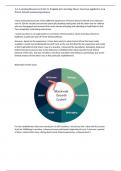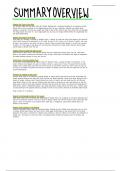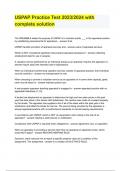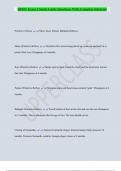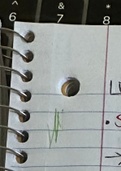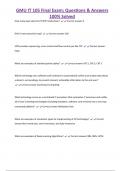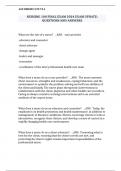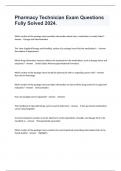Molecular Biology 2573
Kiyotake Ishikawa Editor
Cardiac Gene
Therapy
Methods and Protocols
Second Edition
,METHODS IN MOLECULAR BIOLOGY
Series Editor
John M. Walker
School of Life and Medical Sciences
University of Hertfordshire
Hatfield, Hertfordshire, UK
For further volumes:
http://www.springer.com/series/7651
,For over 35 years, biological scientists have come to rely on the research protocols and
methodologies in the critically acclaimed Methods in Molecular Biology series. The series was
the first to introduce the step-by-step protocols approach that has become the standard in all
biomedical protocol publishing. Each protocol is provided in readily-reproducible step-by
step fashion, opening with an introductory overview, a list of the materials and reagents
needed to complete the experiment, and followed by a detailed procedure that is supported
with a helpful notes section offering tips and tricks of the trade as well as troubleshooting
advice. These hallmark features were introduced by series editor Dr. John Walker and
constitute the key ingredient in each and every volume of the Methods in Molecular Biology
series. Tested and trusted, comprehensive and reliable, all protocols from the series are
indexed in PubMed.
,Cardiac Gene Therapy
Methods and Protocols
Second Edition
Edited by
Kiyotake Ishikawa
Icahn School of Medicine at Mount Sinai, New York, NY, USA
,Editor
Kiyotake Ishikawa
Icahn School of Medicine at Mount
Sinai
New York, NY, USA
ISSN 1064-3745 ISSN 1940-6029 (electronic)
Methods in Molecular Biology
ISBN 978-1-0716-2706-8 ISBN 978-1-0716-2707-5 (eBook)
https://doi.org/10.1007/978-1-0716-2707-5
© The Editor(s) (if applicable) and The Author(s), under exclusive license to Springer Science+Business Media, LLC, part
of Springer Nature 2022, Corrected Publication 2023
Chapter 3 is licensed under the terms of the Creative Commons Attribution 4.0 International License (http://
creativecommons.org/licenses/by/4.0/). For further details see license information in the chapter.
The images or other third party material in this book are included in the book’s Creative Commons license, unless
indicated otherwise in a credit line to the material. If material is not included in the book’s Creative Commons license and
your intended use is not permitted by statutory regulation or exceeds the permitted use, you will need to obtain
permission directly from the copyright holder.
This work is subject to copyright. All rights are solely and exclusively licensed by the Publisher, whether the whole or part
of the material is concerned, specifically the rights of translation, reprinting, reuse of illustrations, recitation,
broadcasting, reproduction on microfilms or in any other physical way, and transmission or information storage and
retrieval, electronic adaptation, computer software, or by similar or dissimilar methodology now known or hereafter
developed.
The use of general descriptive names, registered names, trademarks, service marks, etc. in this publication does not imply,
even in the absence of a specific statement, that such names are exempt from the relevant protective laws and regulations
and therefore free for general use.
The publisher, the authors, and the editors are safe to assume that the advice and information in this book are believed to
be true and accurate at the date of publication. Neither the publisher nor the authors or the editors give a warranty,
expressed or implied, with respect to the material contained herein or for any errors or omissions that may have been
made. The publisher remains neutral with regard to jurisdictional claims in published maps and institutional affiliations.
This Humana imprint is published by the registered company Springer Science+Business Media, LLC, part of Springer
Nature.
The registered company address is: 1 New York Plaza, New York, NY 10004, U.S.A.
,Preface
Since the publication of Cardiac Gene Therapy in 2016, there has been considerable progress
in clinical translation of gene therapy, highlighted by clinical approvals for multiple gene
therapy products. Unfortunately, no gene therapy specifically targeting the heart has trans-
lated into clinical practice yet, and to date, only a few early-phase clinical trials are underway.
However, activity in preclinical areas of cardiac gene therapy has gained momentum and is
rapidly growing toward the realization of next-generation therapy for cardiovascular
diseases.
In the second edition of Cardiac Gene Therapy, I recruited authors with long-term
expertise in cardiac gene therapy experiments. Many of the collected protocol chapters are
from expert investigators who have published novel work in the past few years since the
publication of the first edition. With a focus on promoting further clinical translation,
covered topics include gene suppression, editing, and reprogramming; cardiac gene therapy
vectors and promotors; cardiac gene delivery methods; pulmonary hypertension; and
patient screening and measuring the efficacy of cardiac gene therapy. Together with the
protocols included in the first edition, these detailed and practical protocols will be valuable
tools for researchers in cardiology to conduct cardiac gene therapy research.
I thank all the expert authors for their dedication in describing step-by-step methodol-
ogies that will undoubtedly lead to further advancements and successful clinical translation
of cardiac gene therapy. I am incredibly grateful to John M. Walker, the series editor, who
provided me with this opportunity and guided the volume preparation process. I hope that
readers will find Cardiac Gene Therapy: Methods and Protocols, Second Edition a useful
reference for conducting and improving their projects.
New York, NY, USA Kiyotake Ishikawa
v
,Contents
Preface . . . . . . . . . . . . . . . . . . . . . . . . . . . . . . . . . . . . . . . . . . . . . . . . . . . . . . . . . . . . . . . . . . . . . v
Contributors. . . . . . . . . . . . . . . . . . . . . . . . . . . . . . . . . . . . . . . . . . . . . . . . . . . . . . . . . . . . . . . . . xi
PART I OVERVIEW
1 Updates on Cardiac Gene Therapy Research and Methods: Overview
of Cardiac Gene Therapy . . . . . . . . . . . . . . . . . . . . . . . . . . . . . . . . . . . . . . . . . . . . . . . . 3
Francisco J. Romeo, Spyros A. Marvopoulos,
and Kiyotake Ishikawa
PART II GENE SUPPRESSION, EDITING, AND REPROGRAMMING
2 Tough Decoy-Mediated Cardiac Gene Suppression . . . . . . . . . . . . . . . . . . . . . . . . . 13
Changwon Kho
3 Direct Reprogramming of Adult Human Cardiac Fibroblasts
into Induced Cardiomyocytes Using miRcombo . . . . . . . . . . . . . . . . . . . . . . . . . . . . 31
Camilla Paoletti, Carla Divieto, and Valeria Chiono
4 CRISPR/Cas9 Gene Editing of RYR2 in Human iPSC-Derived
Cardiomyocytes to Probe Ca2+ Signaling Aberrancies
of CPVT Arrhythmogenesis . . . . . . . . . . . . . . . . . . . . . . . . . . . . . . . . . . . . . . . . . . . . . . 41
Naohiro Yamaguchi, Xiao-Hua Zhang, and Martin Morad
5 Enhancing Cardiomyocyte Transcription Using In Vivo
CRISPR/Cas9 Systems . . . . . . . . . . . . . . . . . . . . . . . . . . . . . . . . . . . . . . . . . . . . . . . . . . 53
Eric Schoger and Laura C. Zelarayán
6 AAV-Mediated Somatic Gene Editing for Cardiac and Skeletal
Muscle in a Large Animal Model. . . . . . . . . . . . . . . . . . . . . . . . . . . . . . . . . . . . . . . . . . 63
Tilman Ziegler, Tarik Bozoglu, and Christian Kupatt
PART III CARDIAC GENE THERAPY VECTORS AND PROMOTORS
7 Optimization of Synthesis of Modified mRNA. . . . . . . . . . . . . . . . . . . . . . . . . . . . . . 77
Jimeen Yoo and Lior Zangi
8 Design and Production of Heart Chamber-Specific AAV9 Vectors . . . . . . . . . . . . 89
Alina S. Bilal, Donna J. Thuerauf, Erik A. Blackwood,
and Christopher C. Glembotski
9 Generation of Atrial-Specific Construct Using Sarcolipin
Promoter-Associated CRM4 Enhancer . . . . . . . . . . . . . . . . . . . . . . . . . . . . . . . . . . . . 115
Dongtak Jeong
vii
,viii Contents
PART IV CARDIAC GENE DELIVERY METHODS
10 Cardiac Targeted Adeno-Associated Virus Injection in Rats . . . . . . . . . . . . . . . . . . 135
Michael G. Katz, Yoav Hadas, Adam S. Vincek,
Nataly Shtraizent, Eric Schadt, and Efrat Eliyahu
11 Cardiac Gene Delivery in Large Animal Models:
Antegrade Techniques . . . . . . . . . . . . . . . . . . . . . . . . . . . . . . . . . . . . . . . . . . . . . . . . . . . 147
Spyros A. Mavropoulos, Kelly P. Yamada, Tomoki Sakata,
and Kiyotake Ishikawa
12 Locked Nucleic Acid AntimiR Therapy for the Heart . . . . . . . . . . . . . . . . . . . . . . . 159
Sabine Samolovac and Rabea Hinkel
13 Cardiac Gene Delivery in Large Animal Models: Selective Retrograde
Venous Injection. . . . . . . . . . . . . . . . . . . . . . . . . . . . . . . . . . . . . . . . . . . . . . . . . . . . . . . . 171
Philipp Schlegel and Philip W. J. Raake
14 Endocardial Gene Delivery Using NOGA Catheter System . . . . . . . . . . . . . . . . . . 179
Satu Siimes, Niko J€ a rvel€ a inen, Henna Korpela,
and Seppo Yl€a -Herttuala
15 Surgical Methods for Cardiac Gene Delivery in Large Animals . . . . . . . . . . . . . . . 189
Michael G. Katz, Yoav Hadas, Adam S. Vincek, Nataly Shtraizent,
Hylton P. Gordon, Peter Pastuszko, Eric Schadt, and Efrat Eliyahu
16 Atrial Gene Painting in Large Animal Model of Atrial Fibrillation. . . . . . . . . . . . . 205
Weilan Mo and J. Kevin Donahue
17 Stent-Based Gene Delivery for Coronary Disease . . . . . . . . . . . . . . . . . . . . . . . . . . . 217
Ivan S. Alferiev, Michael Chorny, Robert L. Wilensky,
Robert J. Levy, and Ilia Fishbein
18 Selective Anti-AAV Antibody Depletion by Hemapheresis
and Immunoadsorption . . . . . . . . . . . . . . . . . . . . . . . . . . . . . . . . . . . . . . . . . . . . . . . . . 235
Alejandro Orlowski and Thomas Weber
19 Ex Vivo Delivery of Viral Vectors by Organ Perfusion
for Cardiac Transplantation Gene Therapy . . . . . . . . . . . . . . . . . . . . . . . . . . . . . . . . . 249
Michelle Mendiola Pla, Amy Evans, Paul Lezberg,
and Dawn E. Bowles
PART V PULMONARY HYPERTENSION
20 Intra-Airway Gene Delivery for Pulmonary Hypertension
in Rodent Models. . . . . . . . . . . . . . . . . . . . . . . . . . . . . . . . . . . . . . . . . . . . . . . . . . . . . . . 263
Malik Bisserier, Olivier Boucherat, Sebastien Bonnet,
and Lahouaria Hadri
21 Endobronchial Gene Delivery for Pulmonary Hypertension
in a Large Animal Model . . . . . . . . . . . . . . . . . . . . . . . . . . . . . . . . . . . . . . . . . . . . . . . . 279
Olympia Bikou and Kiyotake Ishikawa
, Contents ix
PART VI PATIENT SCREENING AND MEASURING THE EFFICACY
OF CARDIAC GENE THERAPY
22 Cell-Based Determination of Neutralizing Antibodies Against
Adeno-Associated Virus in Cardiac Gene Therapy . . . . . . . . . . . . . . . . . . . . . . . . . . 293
Anjali J. Ravichandran, Renata Mazurek,
and Kiyotake Ishikawa
23 Left Ventricular Pressure Volume Assessment Using Carotid
Artery Access in the Rat . . . . . . . . . . . . . . . . . . . . . . . . . . . . . . . . . . . . . . . . . . . . . . . . . 305
Spyros A. Mavropoulos and Kiyotake Ishikawa
24 Assessing the Effect of Cardiac Gene Therapy Using Catheter-Based
Pressure–Volume Measurement in Large Animals . . . . . . . . . . . . . . . . . . . . . . . . . . . 313
Tomoki Sakata, Renata Mazurek, Spyros A. Mavropoulos,
Francisco J. Romeo, Anjali J. Ravichandran,
and Kiyotake Ishikawa
25 ELISpot Assay for Gene Therapy in Large Animal Studies . . . . . . . . . . . . . . . . . . . 323
Renata Mazurek and Kiyotake Ishikawa
26 Assessing Recombinant AAV Shedding After Cardiac Gene Therapy . . . . . . . . . . 333
Melad Farraha and Eddy Kizana
Correction to: Direct Reprogramming of Adult Human Cardiac Fibroblasts
into Induced Cardiomyocytes Using miRcombo . . . . . . . . . . . . . . . . . . . . . . . . . . . . . . . . C1
Index . . . . . . . . . . . . . . . . . . . . . . . . . . . . . . . . . . . . . . . . . . . . . . . . . . . . . . . . . . . . . . . . . . . . . . 345
, Contributors
IVAN S. ALFERIEV • The Children’s Hospital of Philadelphia, Philadelphia, PA, USA; The
University of Pennsylvania Perelman School of Medicine, Philadelphia, PA, USA
OLYMPIA BIKOU • Cardiovascular Research Institute, Icahn School of Medicine at Mount
Sinai, New York, NY, USA
ALINA S. BILAL • Translational Cardiovascular Research Center and Department of
Internal Medicine, University of Arizona College of Medicine – Phoenix, Phoenix, AZ,
USA
MALIK BISSERIER • Cardiovascular Research Institute, Icahn School of Medicine at Mount
Sina, New York, NY, USA
ERIK A. BLACKWOOD • Translational Cardiovascular Research Center and Department of
Internal Medicine, University of Arizona College of Medicine – Phoenix, Phoenix, AZ,
USA
SEBASTIEN BONNET • Pulmonary Hypertension Research Group, Québec Heart and Lung
Institute Research Centre, QC, Canada; Department of Medicine, Laval University, QC,
Canada
OLIVIER BOUCHERAT • Pulmonary Hypertension Research Group, Québec Heart and Lung
Institute Research Centre, QC, Canada; Department of Medicine, Laval University, QC,
Canada
DAWN E. BOWLES • Duke University, Durham, NC, USA
TARIK BOZOGLU • Klinik und Poliklinik für Innere Medizin I, Klinikum rechts der Isar der
Technical University Munich, Munich, Germany; German Center for Cardiovascular
Research (DZHK), Munich Heart Alliance, Munich, Germany
VALERIA CHIONO • Department of Mechanical and Aerospace Engineering, Politecnico di
Torino, Turin, Italy; Department for Materials and Devices of the National Research
Council, Institute for the Chemical and Physical Processes (CNR-IPCF UOS), Pisa, Italy
MICHAEL CHORNY • The Children’s Hospital of Philadelphia, Philadelphia, PA, USA; The
University of Pennsylvania Perelman School of Medicine, Philadelphia, PA, USA
CARLA DIVIETO • Division of Advanced Materials and Life Sciences, Istituto Nazionale di
Ricerca Metrologica, Turin, Italy
J. KEVIN DONAHUE • Cardiovascular Medicine, UMass Chan Medical School, Worcester, MA,
USA
EFRAT ELIYAHU • Department of Genetics and Genomic Sciences, Icahn Institute for
Genomics and Multiscale Biology, Icahn School of Medicine at Mount Sinai, New York, NY,
USA; Icahn School for Data Science and Genomic Technology, Icahn School of Medicine at
Mount Sinai, New York, NY, USA
AMY EVANS • Duke University, Durham, NC, USA
MELAD FARRAHA • Centre for Heart Research, The Westmead Institute for Medical Research,
Westmead, NSW, Australia
ILIA FISHBEIN • The Children’s Hospital of Philadelphia, Philadelphia, PA, USA; The
University of Pennsylvania Perelman School of Medicine, Philadelphia, PA, USA
CHRISTOPHER C. GLEMBOTSKI • Translational Cardiovascular Research Center and
Department of Internal Medicine, University of Arizona College of Medicine – Phoenix,
Phoenix, AZ, USA
xi

